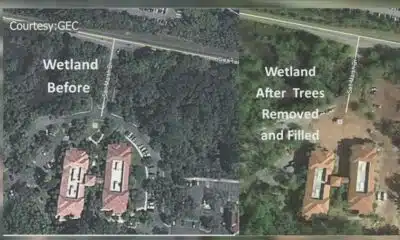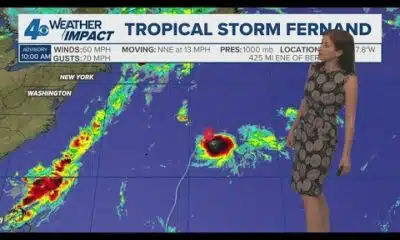(The Center Square) – Louisiana is critical to the Trump administration’s energy plans, U.S. Transportation Secretary Sean Duffy said.
The Trump administration selected McNeese State University as the site for a new center of excellence.
The Transportation Department’s Pipeline and Hazardous Materials Safety Administration (PHMSA) has selected the Lake Charles-based university as its first National Center of Excellence for Liquefied Natural Gas (LNG) Safety. It’s the first undergraduate institution in the U.S. to offer a certificate program in LNG Business. The university already offers its own LNG Center of Excellence.
“Producing and exporting LNG is one of the most powerful ways we can unleash American energy, and the Lake Charles region is a critical hub of LNG activity in the U.S.,” Duffy said. “The sheer volume of product supplied by the state of Louisiana is unparalleled and growing, and there is no better place to locate our Center of Excellence.”
The designation came after U.S. Sen. John Kennedy, R-LA, established the PHMSA National Center of Excellence for LNG five years ago in the 2020 PIPES Act under the first Trump administration. Included in the law was a provision Kennedy added to create “the first-ever National Center of Excellence for LNG Safety, but I didn’t stop there,” Kennedy said. “I made sure in that bill that the newly created Center was required to be in Louisiana.”
Under Trump’s second term, the center was chosen to be headquartered at McNeese State University in Lake Charles, an oil and natural gas powerhouse in Calcasieu Parish along the Gulf of America.
The PIPES Act, which improves pipeline safety and infrastructure, created the PHMSA center to “enhance the United States as the leader and foremost expert in LNG operations by furthering the expertise of the Federal Government in the operations, management, and regulatory practices of LNG facilities; acting as a repository of information on best practices for the operation of LNG facilities; and facilitating collaboration among LNG sector stakeholders.”
The center will facilitate research and development, training, and regulatory coordination to develop “LNG safety solutions to real-world challenges through global and domestic collaboration among LNG stakeholders.”
“The Center will advance LNG safety by promoting collaboration among government agencies, industry, academia, and other safety partners,” PHMSA Acting Administrator Ben Kochman said. “Consolidating such remarkable levels of expertise will benefit the LNG sector for many generations to come.”
Being located at McNeese “will be a game-changer for our region in terms of workforce development and groundbreaking research,” McNeese State University President Dr. Wade Rousse said. “We are excited to be on the forefront of helping ensure safety and sustainability in the energy sector and look forward to working with PHMSA to develop a world-class facility to house their staff.”
The U.S. is the top LNG exporter in the world, with the U.S. oil and natural gas industry and Louisiana and Texas ports propelling it to its number one status, The Center Square reported.
Lake Charles also found itself at the center of a Biden administration LNG export ban. Applications for exports had been frozen until a federal judge reversed the Biden policy last year. Under the second Trump administration, LNG exports projects are expanding in Louisiana.
Major projects underway in Calcasieu Parish include an Energy Transfer subsidiary Lake Charles Exports LNG export project approved under the first Trump administration in late 2019 for a five-year extension. Building the facility is projected to create up to 4,000 construction jobs and 200 fulltime jobs once fully operational.
Another LNG project announced last month is being spearheaded by a west Australian company that’s making the largest foreign investment in state history to build an LNG production and export terminal in Calcasieu Parish, The Center Square reported.












































